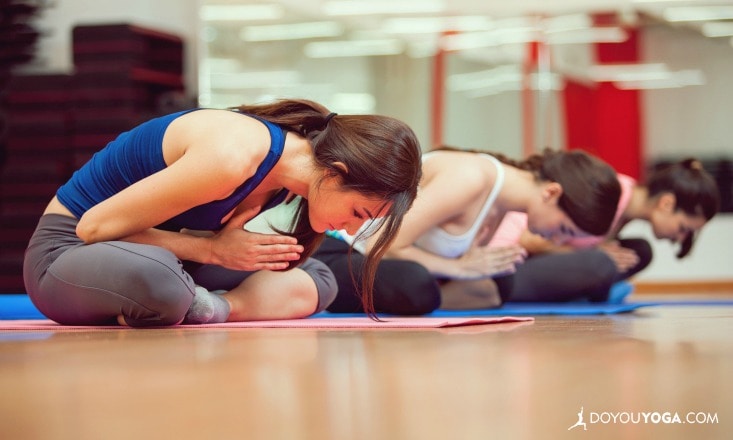People come to yoga class for many different reasons. For most, it may be a physical practice. Others may be trying to improve a medical condition like back pain. Emotional or spiritual healing is another reason.
No matter the reason your students are there, connecting with them is part of the practice of teaching. Whether it’s as simple as eye contact and a smile, or a really good hands-on correction, the student will leave your class feeling like they matter. And that little bit of attention goes a long way.
There's an art to connecting with your yoga students.
How Not to Teach Yoga
I recently had a woman enter my yoga studio who I immediately did not like. She was sharp-tongued, passive-aggressive, and quick to criticize. I allowed my ego to take control, casted judgement, and decided I did not want her coming back.
Knowing she was a beginner to yoga, I put her in the back of the room, taught an intense and fast class with little instruction, and watched her fumble through class. The outcome was a negative experience for this student who did not come back to class.
This is a classic example of how not to teach yoga.
In this life, we are all students, and we are all teachers. We all have a specific way that we learn as a student and teach as a teacher. Understanding those differences can help us to recognize our differences, meet each individual with understanding, and attempt to obtain that important personal connection.
Asana practice is primarily a physical practice. However, our bodies are connected to mind and soul. Ignoring the other two components, we cannot fully teach a yoga class.
Working on Ourselves
During our yoga asanas, we work on the emotions, clearing blockages that are in the cells and tissues. Finding this connection allows you and your students to go deeper into postures and into the practice. By simple words and postures we can help people learn to listen to their intuition and connect with their spirit. This is possible through starting with the basic asanas.
Connecting with the spirit is a life priority, and yet we don’t recognize the need for this in our daily practice. We have lost the connection. Starting on the mat, we may find moments where we find that connection, breathing into an asana to awaken the spirit, finding forgiveness, compassion, and understanding.
Eventually, the moments can be taken off the mat and we begin to look at how we can connect to our spirit and others' off the mat as well.
Whatever brings people into your yoga class is fine. Perhaps a knee injury, or wanting to lose ten pounds from binging over the holidays. Whatever brings them in is the starting point. It’s the window to the opportunity.
Encourage people to come into the room, give some time and attention on the mat on a regular basis, and they will begin to get more than they ever imagined. People begin to nourish their starving spirit. This can be profound. They being to open up emotionally. Over time and with consistency, this becomes a lifestyle change.
Recognizing Limitations
So how do we impart a sense of the spiritual aspects of yoga to our students without seeming pretentious? This is the challenge.
You must first recognize your limitations. If you are struggling with sticking with your vegan diet, for example, don’t preach to others that they need to be on a vegan diet. Teach what you know, even if it’s as simple as practicing kindness. Know your limitations, then extend your teachings from there.
And be a good listener. The best teacher is an even better listener. The ultimate truth is found within the self, and needs no lengthy explanation. Sometimes silence is stronger than words.
Help Students Connect
In yoga class, start by helping students to connect with themselves. Start in seated meditation with the attention on the self and the eyes closed. Then teach pranayama.
People are disconnected from feeling their body, which can create problems in life because they begin to get stuck in their minds. The body can tell us so much about what is going on, but we need to learn to pay attention. Back and neck pain can be from tensing the shoulders as a result of stress. Swollen glands may be the result of not getting adequate rest, and wrinkles in the forehead from too much worry.
Pay attention. Listen to your body when it talks to you, and you will find the source of your discomfort which usually lies in your life somewhere (work, relationships, diet, poor sleep, etc).
How do you help your students connect to their practice? Share with us in the comments below!


